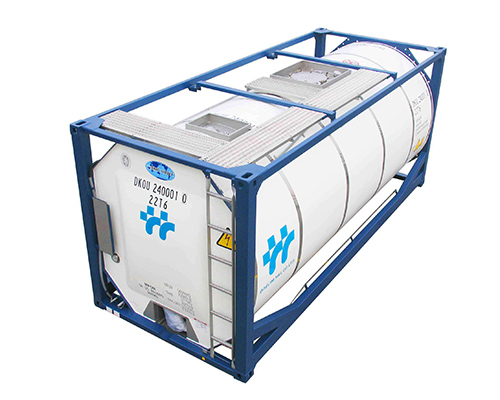Yingkou Hengyang New Energy Chemical Co., Ltd.
Address: Xianren Island Energy and Chemical Zone, Yingkou City, Liaoning Province, via the west side of the Fourth Road
Zip code:115200
Telephone:18241754999
Fax:0417-6775999
E-mail:1313264@qq.com
Website:en.yingkouhengyang.com
Electrochemical behavior of vinyl carbonate for lithium ion battery electrolyte
Electrolyte is an ionic conductor conducting between the positive and negative electrodes of batteries. Its performance and the interface condition formed by its interaction with the positive and negative electrodes greatly affect the performance of batteries [1-2].
At present, the most widely used electrolyte in commercial lithium ion batteries is a binary or ternary mixed solvent based on vinyl carbonate (EC) dissolved in conductive lithium salt LiPF6. These solvents are generally organic carbonate series, including dimethyl carbonate (DMC), diethyl carbonate (DEC), methyl ethyl carbonate (EMC). Propylene carbonate (PC) etc. [3-5]. The above organic solvents are mainly based on the following facts:
(1) LiPF6 does not react with solvents and can passivate the collector Al to protect it.
(2) EC has high dielectric constant and can provide high ionic conductivity.
(3) linear carbonate can effectively reduce the viscosity of electrolyte and help to form a stable SEI film (solid electrolyte phase boundary film) [3] on the surface of carbon negative electrode. However, the performance of this kind of electrolyte can not meet the requirements of high energy and high stability of lithium ion. Finding a new type of electrolyte is one of the important topics in the field of lithium ion battery research [6].
Therefore, a thorough understanding of the electrochemical behavior of existing organic solvents will help to develop new electrolytes, optimize the proportion of solvents and find suitable additives. The Cathodic Behavior of DMC, DEC, EMC and PC on platinum electrode and the deintercalation of lithium ion on carbon negative electrode are studied by linear potential scanning and cyclic voltammetry.
1. Three-electrode system was used in the electrochemical system. The working electrodes were platinum and carbon electrodes with diameter of 100 microns (electrode fabrication: graphite: PVDF = 92:8 (wt%) was dissolved in N-methyl pyrrolidone, stirred and evenly coated on copper foil, the electrode area was 0.2 cm 2), and large area of lithium metal was used as reference electrode and counter-electrode. The instrument used is CHI650B electrochemical workstation made in China. The potential values in this paper are all relative to Li/Li+values. The lithium salt of electrolyte is LiPF6 (Stella Chemical, Osaka Japan), and the solvents are battery-grade dimethyl carbonate (DMC), diethyl carbonate (DEC), methyl ethyl carbonate (EMC) and propylene carbonate (PC), respectively. The solvent is purified by adsorbing molecular sieve after distillation to a purity of more than 99.99%. The preparation of electrolyte and the assembly of batteries were carried out in glove box filled with high purity argon, and the concentration of LiPF6 was lmol/L. The electrolyte was dehydrated by molecular sieve adsorption. The water content was determined by Karl Fisher moisture analyzer KF831 (Swiss product). The water content of the electrolyte was determined to be less than 20 *10-4%. The acid content in the electrolyte was determined by Karl Fisher potentiometric titrator 798 GPT Titrino (native of Switzerland).
2 results and discussion
2.1 Physicochemical properties of common carbonates in electrolytes Solvent composition is a key factor affecting the conductivity of organic electrolytes. In order to develop organic electrolyte solution system with high conductivity, wide temperature range and electrochemical window, it is required in principle that the solvent system consisting of electrolyte has high dielectric constant, low viscosity, high boiling point, low solidification point and stable electrochemical properties. The main properties of organic solvents PC, DMC, DEC and EMC commonly used in lithium ion batteries are shown in Table 1. As can be seen from Table 1, cyclic carbonate PC has higher viscosity and dielectric constant, while linear fatty carbonate (DMC, DEC, EMC) has lower viscosity and dielectric constant. Therefore, a single solvent component has its drawbacks. At present, the mixed solvents of cyclic carbonate and linear carbonate are often used in commercial lithium ion batteries.
2.2 The Cathodic Behavior of one-component electrolyte on platinum electrode Figure 1 shows the cathodic reduction curve of one-component solvent DMC, DEC, EMC, PC on platinum electrode. It can be seen that the electrolyte decomposes to varying degrees after 0.8V. The results are consistent with those reported by Ein-Eli et al. [9] and Choi [10]. The reduction difficulty of various carbonates is DMC in turn.
